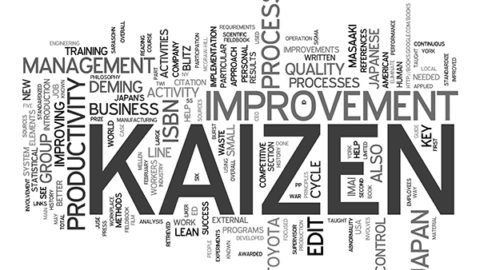
Through the 10-step Kaizen application process at the PET hot extraction line of SPVB HCMC factory, the error rate on the bottle cap has decreased significantly from 0.14% to 0.10% (the number of defective bottles caused by cap / total number of bottles produced). The rate of defect cap / total production has decreased from 0.10% to 0.04%.
Below are the steps of improvement that have been adopted by the factory:
Step 1: Identify the improvement topic
Current status before Kaizen: In fact, in 2018, the production division received 21 customer complaints, was exceeding the target (18 cases) and the main focus was on the line. hot extraction, which the main problem from cap error during bottle capping. Therefore, topics of improvement are formulated based on the approach to quality objectives, namely quantity of complaints and quality problems, from which to identify root causes and propose and implement solutions. Improvement contributes to improve the quality control efficiency for the plant, and meets company strategy.
|
Project name: Lid error improvement in hot extraction line Problem statement: The number of customers complaining is increasing, exceeding the set targets; The tendency of lid defects to repeat and increase, affects product quality. Project Objective: Reduce the cap error rate by 50%, from 0.14% to 0.07%. No customer complaints occurred. Scope of project: research on lid errors at PET hot extraction line at SPVB in District 12, HCMC. Timeline: October 2018: Implementation steps 1, 2, 3 November 2018: Implementation steps 4, 5 December 2018 – February 2019: Implementation steps 6 3/2019: Implementation steps 7, 8, 9, 10 Project team member: Mr. Q: Project team leader (Technical department) Mr. M: Member (Technical department) Mr. T: Member (Technical department) Mr. D: Member (Product department Mr. N: Member (Production department) Ms. D: Member (Quality control department) Sponsor: Factory Manager Head of Maintenance Production Manager Head of Operations and Maintenance |
Step 2: Know the current situation
According to the actual assessment at the production site, every day there are about 450 waste products that are eliminated due to the error from the lid, accounting for 0.14% of the total production of the day. In which, the main focus error is due to: deviation of the cap, broken quality sealing and distortion of the cap. This is also the basis to focus on solving the problem of bottle caps for Oolong Tea + tea products.
Step 3: Set goals
The improvement project goal is set on the basis of the vision of the SPVB manufacturing sector, reducing the number of customer complaints by 50% per year, corresponding to the reduction from 8 complaints cases in 2018 to 4 cases in 2019. This corresponds to a 50% reduction in cap defect rate from 0.14% to 0.07% of total production and no customer complaints for the Oolong Tea + product line.
Step 4: Detailed measurement
This step reviews the entire production process of Oolong tea products from the input to the filling, capping, code printing, pasteurization, film sealing and finally packing, palleting.
When the project was launched, the abnormalities that caused cap failures identified from direct observation and analysis at the production site were: (1) The bottle after the filling of the capping machine input showed shaking , swinging, (2) The cap is tilted in the chuck after taking the cap and preparing to fill the bottle, (3) The capping head has vibration phenomenon, unstable center with the bottle.
Step 5: Analyze the root cause
Through group discussion, Human, Method and Material factors do not seem to be the cause of the error. Three causes (NG – No Good) are determined from the Mechanical factor: The inlet bottle is swayed, the cap is tilted in the chuck after taking the cap, the cap is swayed.
From these 3 causes, Why-Why method has been applied to find the root cause
Why – Why analysis results have identified the following root causes:
Step 6: Recovery and improvement measures
Perform recovery
Three measures are proposed:
Replace the horseshoe and perform deflection adjustment to optimize contact between the horseshoe, chuck and guide.
Replace the new chuck capping head from the machine manufacturer.
Repair and replacement with supplies from Nanjing machine manufacturer.
After restoring the capping machine, the result of cap failure has been significantly reduced from 0.14% to 0.10% of the number of bottles produced by the cap / total number of bottles.
Make improvements
The next step after performing the restoration is to implement an improvement by changing the capping tip design to suit the cap’s resizing tolerance, in order to prevent the cap from buckling when entering the capping end.
The new design has brought a positive effect on the first try. Accordingly, the improvement team has installed all the capping heads in the production process. As a result, the defect cap / total production output ratio has decreased from 0.10% to 0.04%.
Step 7: Evaluate the effectiveness
The project effects achieved following restoration and improvement measures are:
Step 8: Standardization
Based on the results of the rehabilitation and improvement measures, activities to be standardized continue to be proposed:
Step 9: Review the process
The improvement process is reviewed in terms of objectives, economic benefits, technical benefits and scope of application that can be replicated or not.
Step 10: The challenge for the future
SPVB found that the Kaizen project improving the cap error of the hot extraction line was a good premise for the implementation of other Kaizen projects in the factory.
Productivity and Quality Office